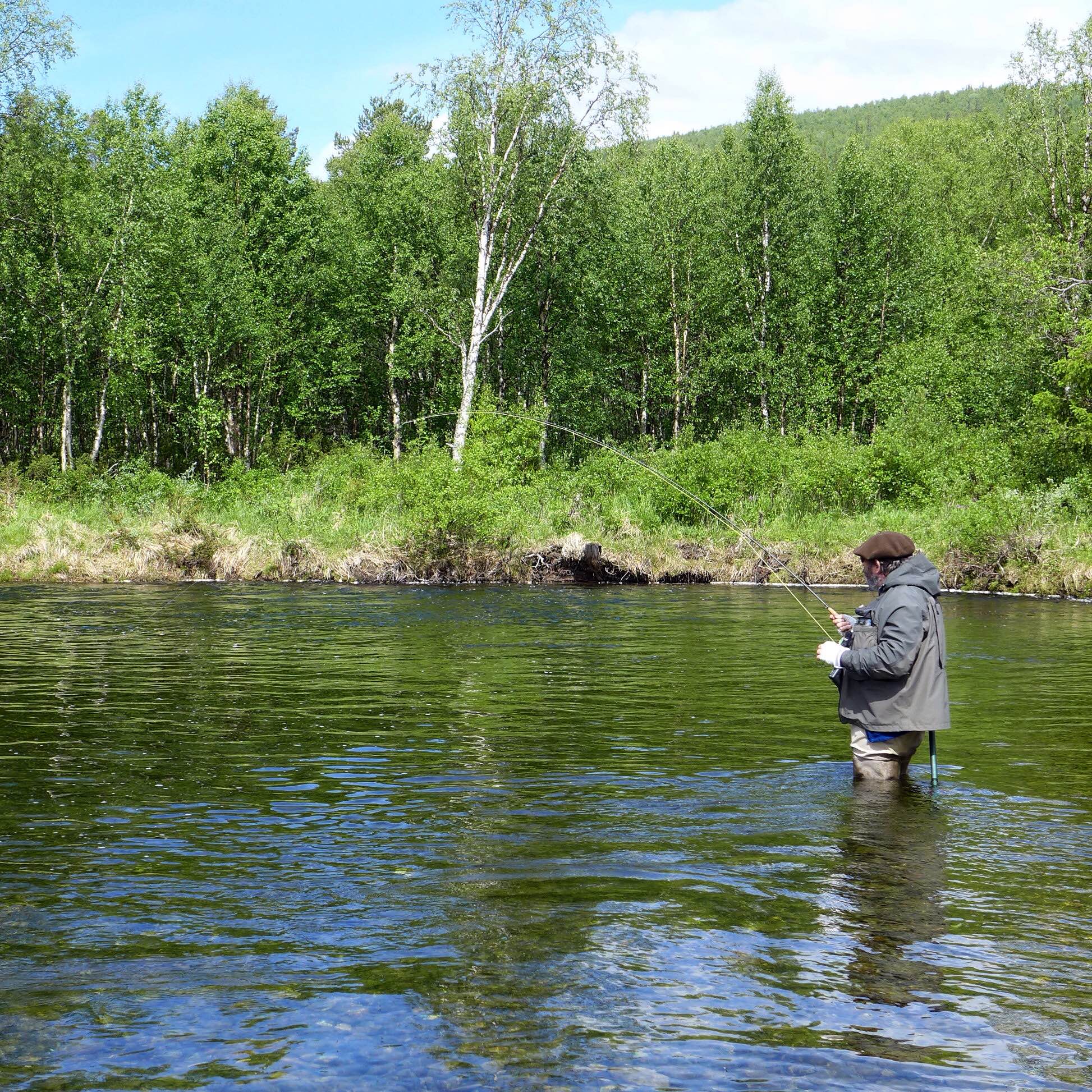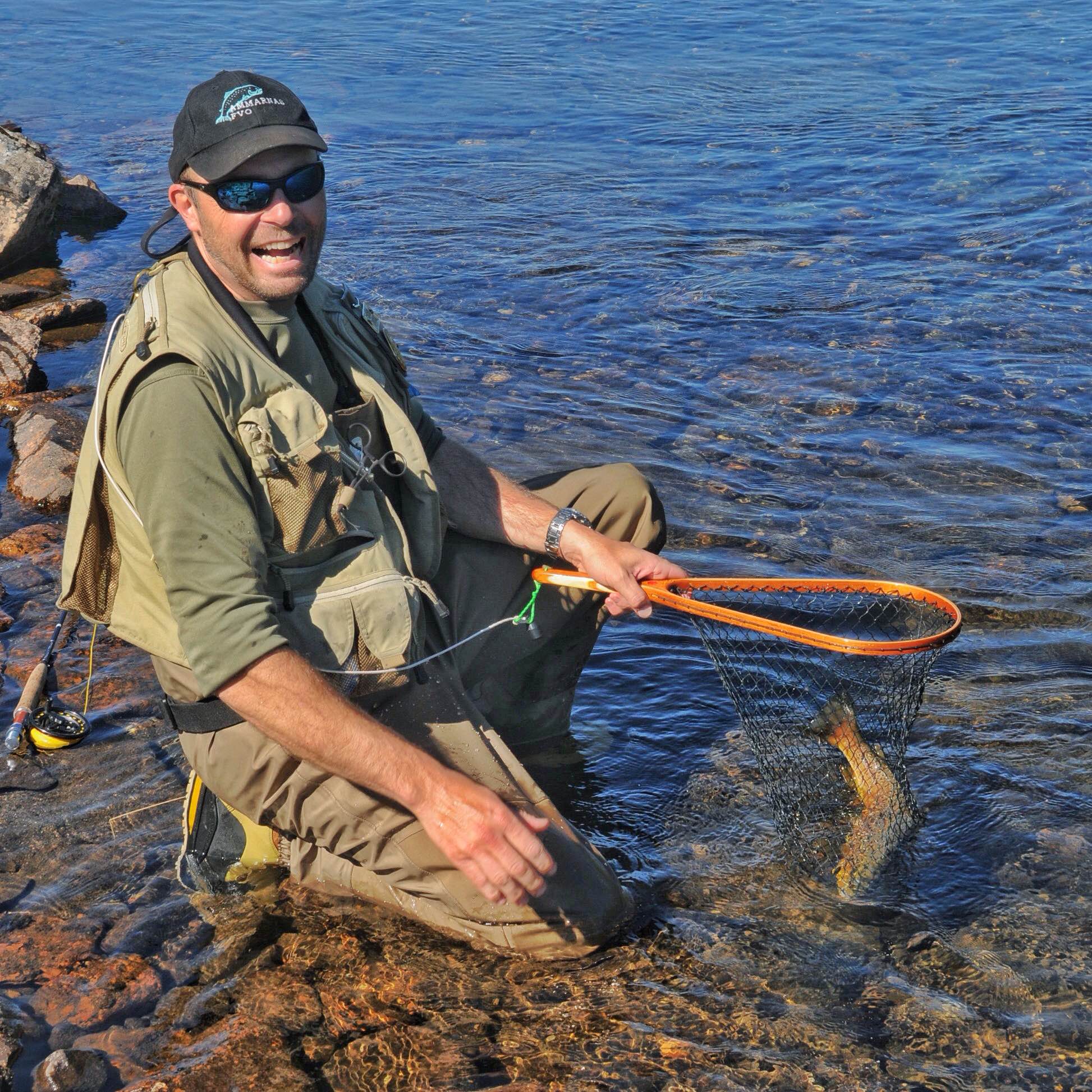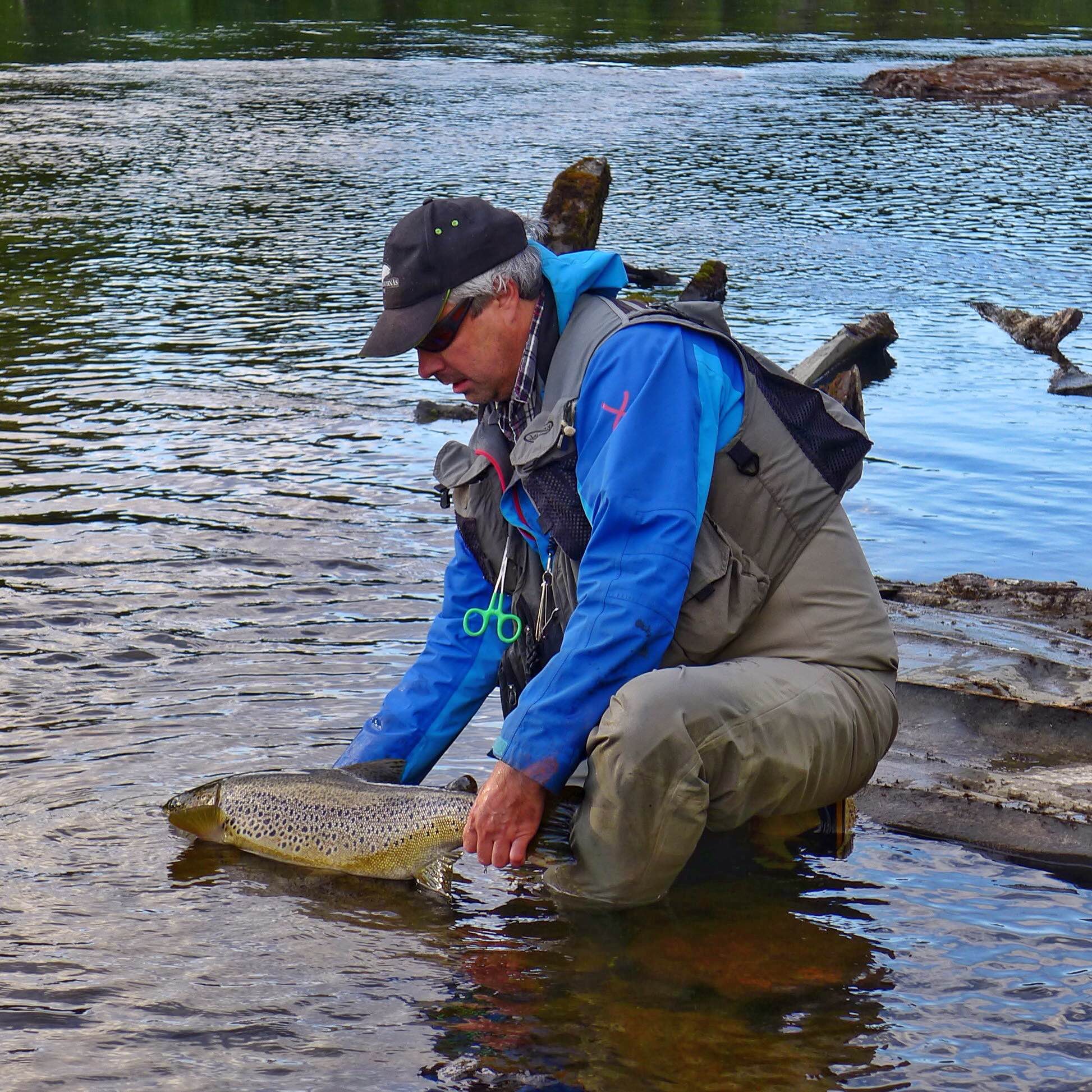The right equipment is the key to an efficient fishing.
Photo: Mikael Båth, 2015 - Johan Borgström with a light two hand rod by Lower Harabacken
Photo: Mikael Båth, 2015 - Johan Borgström with a light two hand rod by Lower Harabacken
Fly fishing
Grayling
The grayling fishermen mostly choose fly rods with line class #4 or #5 and that also works well here with us. If you know that you’ll be fishing for really big grayling it’s wise to move up to line class #6 to reel in the fish quickly. When fishing for grayling it’s always the size of the fish that determines the rod’s line class.
A typical grayling rod is between 8'-9 ' for dry fly fishing and up to 11'6 " if you’ll be doing a lot of nymph fishing since it’ll then be a lot easier to control the drift of the fly in the water.
Standard lines are ideal for trout fishermen as they are easy to mend in the water which is a prerequisite for the fly not to start dragging too quickly. It’s difficult to fish a dry fly with a short head in streaming water.
The choice of fly for the grayling fisherman at our place is the same as in the rest of northern Sweden. Special Pupa, Klinkhammer, Red Tag, floating caddis pupas, Båth's Spider flies and emergers of all kinds are the patterns that have worked best in recent years.
If conditions are tough with high water or cold weather you’re sometimes forced below the surface even during grayling fishing. Wolly Worm, Mickey Finn, a Rabbit streamer with gold head and similar flies might be the salvation for the fishing when the weather is not with us in our unregulated water.
Should you need to supplement on site in Ammarnäs, Guidecenter always has a good assortment of flies and other supplies.
Trout and char
If you’ll be fishing for trout in Vindelån or char and trout in some mountain lake, it’s usually sufficient with a rod with line class #5. It might, on the other hand, be smart to instead use a rod with line class #6 which tackles the wind and big caddisfly imitations much better.
Regarding the length of the rod it’s a pure matter of taste and everything from 7'-10 'can be considered normal. If you’ll be fishing a lot with nymphs a longer rod is preferred. If you’ll be poking with dry flies in narrow water you might want to use a somewhat shorter rod. The most important is that you have a rod that you enjoy.
The choice of line is just as extensive and anything from short heads and switch cast to long belly range work equally well in most waters you encounter in the Ammarnäs area.
The length of the leader and thickness of the tippet are determined by taste and the fly's size. If the topic is dry flies the old-fashioned rule of thumb is that hook size divided by three equals adequately thick tippet to carry out the fly. A size 12 fly is best fished with a 4X (0.18 mm) tippet if it’s not really timid fish you are after. Then a 5X (0.15mm) tippet might have to be used. When fishing with nymphs, fluorocarbon is always preferable. If you miss a dimension in your equipment, you can always supplement at Guidecenter.
The choice of fly must be adapted to the prevailing conditions when you are with us. Dry flies like Special Pupa and Klinkhammer are successfully used by trout fishermen. LL Caddis and other large caddisflies work well for trout fishing if it’s hatching. Floating pupas and emergers are a must for trout fishing. Trout fishermen cannot forget their Wolly Worms and other streamers at home.
Should you need to supplement on site in Ammarnäs, Guidecenter always has a good assortment of flies and other supplies.
Ammarnäs Trout
When fishing for big fish like Ammarnäs Trout it’s important to have an equipment that’s able to bring in the fish rather fast since it’ll be released and it must then be in best possible condition. In addition, you normally fish with fairly large flies which also require a somewhat more powerful equipment.
They who fish with single handed rods should select line class #8, 9-10 ', with a rather short head so that shooting larger flies over the river water is comfortable. If you choose to fish with a light double handed rod, line class #6-7, 11'6 "-13'6", is applicable to handle fish and flies well.
When it comes to choice of line it’s most common to fish with a floating line with an intermediate tip (F/I). Low water fishing with a pure floating line is perfectly fine and at high water you can put on a sink tip (F/S3) to reach a bit further down in the quicker current.
They who fish with tubes fitted with muddler heads often use a tippet that sinks slightly faster to bring the lighter flies down. The choice will then be F/I at low water, F/S3 in normal water and F/S5 at really high water.
Since the Ammarnäs Trout is strong and it’s easy to hook the stones, we recommend a leader that isn’t thinner than 0.35 mm at the tip. A good benchmark is to fish with a leader that is 1.5 times the rod’s length using a two handed rod and a bit less with a single handed rod.
As for flies most fishermen fish with tube flies or small fish imitations. Some choose to fish with classic trout patterns like the Montana nymph and they too catch fish. If you want to try dry fly fishing for big trout Matuka Sculpin, Bomber and various mouse imitations work but you have to choose the right place and time to succeed with the dry fly fishing.
Don’t forget that we at Guidecenter in Ammarnäs are here to help you to a better fishing. If you want to discuss something, have a cup of coffee or buy a leader you are always welcome to us.



 Mikael Båth, 2014 (A French guest lands grayling in Tjulån, line class #5)
Mikael Båth, 2014 (A French guest lands grayling in Tjulån, line class #5)
 Johan Borgström, 2013 (Peter Schmitt with a trout in Ältsån)
Johan Borgström, 2013 (Peter Schmitt with a trout in Ältsån)
 Mikael Båth, 2014 (Mattias Oskarsson with Ammarnäs Trout, Sjöforsen)
Mikael Båth, 2014 (Mattias Oskarsson with Ammarnäs Trout, Sjöforsen)